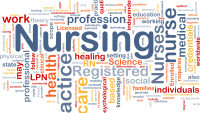Part II Key Messaging
In Part I of this series, the focus was on developing an understanding of the audience when communicating and how essential it is for determining tailored and effective communication strategies on climate breakdown. By understanding the demographics, knowledge levels, concerns, and preferred communication channels of different target groups, such as youth, policymakers, and businesses, nurses can deliver messages that resonate and drive meaningful action. Part II of this series focuses on the message itself, how to use evidence to support the desired outcome, how to frame it, and how to present it in a positive way that will not only be heard but will also be acted upon.
Science-Based Communication
Just as evidence-based practice is the cornerstone of nursing, it is also the bedrock of effective communication about climate change and sustainability. Grounding our communication in scientific facts, presented in an accessible way, instills confidence and trust in our audience. Using and citing credible sources, such as the United Nations Intergovernmental Panel on Climate Change (IPCC) reports, peer-reviewed journals, and organizations with a common focus, adds legitimacy and trustworthiness to the information. The IPCC recently released the Sixth Assessment Report, which provides comprehensive data on the current state of the climate and projections for the future, which can be referenced to support key points (IPCC, 2021). An example of an organization with a common goal that has a scientific background but views issues from a different lens is the Evangelical Environmental Network. This reliance on evidence ensures that the information we provide is not just heard, but also trusted and acted upon, giving our audience a sense of reassurance and confidence.
As nurses, we play a crucial role in addressing potential knowledge gaps and common misconceptions about climate change and sustainability. Our completed research and in-depth understanding of the issue, combined with information about the audience, are important tools in this endeavor. We have the power to dispel misconceptions and educate others. For example, many people may not fully understand the difference between weather and climate. Explaining that weather refers to short-term atmospheric conditions and climate is the average of these conditions over extended periods can clarify this distinction. In addition, tackling misconceptions, such as the belief that individual actions are insignificant compared to industrial emissions is important. Highlighting research and other credible evidence that demonstrates how collective individual actions can lead to significant reductions in emissions can help shift this narrative.
Part III. Building an Effective Environmental Advocacy Toolkit
Communication Tool Kit series for the New Mexico Nurses Association, Nurses for Climate and Health
Depending on the audience, using metaphors and analogies can make complex issues clearer. For instance, comparing the Earth’s atmosphere to a blanket can help non-climate scientists understand the concept of greenhouse gases. Similar to how a thick blanket traps heat, an increase in greenhouse gases leads to a warmer planet. This approach can simplify scientific concepts and make them accessible to a wider audience. While this approach can help, it can also confuse an issue if the person who uses a metaphor or analogy does not accurately capture the idea.
Framing the Issue
Once the research has been done on the issue and the audience is understood, framing the issue becomes critical. When communicating important or sensitive issues, such as global, national, or local challenges caused by climate breakdown, it is crucial to use clear, non-alarmist, non-confrontational language that emphasizes the urgency of the situation and how it will affect people (our families, patients, and our communities). This balance ensures that the audience understands the gravity of the issue without feeling defensive, overwhelmed, or paralyzed by fear. For example, rather than asserting, “The planet is doomed, and we are killing ourselves and everything on it if we don’t act now,” one might say, “We have a wonderful opportunity to protect our planet and ourselves by taking decisive action today.” As you can see, re-framing the statement makes it less negative and less dramatic. When people are trying to influence change, particularly around a topic that is sensitive and potentially controversial (in this example, climate breakdown), it is important to understand the principles and beliefs from which others come. While most scientists believe in what climate science is telling us, some do not. People come from differing backgrounds, religious philosophies, and cultural traditions, each viewing the world and situations from a point of view that has been shaped by those experiences. When considering how to frame a discussion on an issue, it is important to consider the audience and desired outcome. Using our climate breakdown example, it may be more effective to focus less on the reason we are seeing extreme weather and more on how it affects public health and what can be done to make communities more resilient (desired outcome). For other audiences, diving into the science of where extreme weather or climate breakdown comes from (anthropogenic influences) is more appropriate.
Solutions Focused
Once the speaker has decided how the issue will be framed, focusing on solutions is essential to empower and encourage action. As part of this, determining what actionable steps policymakers, communities, and individuals can take fosters a sense of collaboration, leading to collective agency. For example, emphasizing that reducing carbon footprints through lifestyle changes, such as using public transport, adopting renewable energy sources, and supporting sustainable products, can collectively make a significant difference. In the public transportation example, policymakers could help by enacting legislation that ensures public transportation is readily available and uses renewable energy resources so that communities can make these options available to the individuals in the community who, in turn, will use them. To adopt renewable energy sources and support sustainable products, policymakers could implement incentives to encourage the shift, making those products more available and encouraging communities and individuals to use them. In these examples, everyone is a part of the solution. Too often, solutions are proposed that cannot be implemented completely because of a lack of collective agency. By addressing this issue upfront and framing it in terms of collaborative and practical solutions, we can translate awareness into perceptible actions.
Positive Vision
Presenting a positive vision for the future is essential for inspiring hope and driving engagement in sustainability efforts. Highlighting ongoing efforts and focusing on success stories (big or small) will demonstrate that positive change is occurring and that further progress is possible. For instance, cities like Copenhagen and San Francisco have made significant strides in reducing their carbon footprints through innovative policies and technologies. While these examples are more global and national, they also look more local. At the local level, there are notable efforts that emphasize community resilience, sustainability, and the use of renewable energy sources. Sharing these success stories can provide concrete examples of what can be achieved through concerted efforts both globally and locally.
Emphasizing the potential for positive change through individual and collective action is also vital. The transition to renewable energy, for example, not only helps combat climate breakdown but also creates jobs and stimulates economic growth. Pointing out the benefits of sustainable practices (e.g., better public health, more equity, better for the economy long term, etc.) can make the case for action more compelling. For instance, illustrating how investments in energy efficiency can reduce utility bills and improve living standards without negatively implicating other industries to the contrary can appeal to a wider audience. To make this positive vision more relevant, it is helpful to connect it to everyday experiences. For example, describing a future where children can play in cleaner parks, where cities are more resilient to extreme weather, and where communities are healthier and more connected can make the abstract concept of sustainability more tangible and desirable.
Communicating sensitive issues such as climate breakdown and sustainability requires a careful balance between urgency and optimism. This balance should start with science-based research supported by credible sources. Completing this step will help build trust and address misconceptions. Using knowledge gained from the research to create a positive vision for the future inspires hope and demonstrates the tangible benefits of sustainable practices. Then, by framing the issue in clear, relatable terms that focus on solutions, one can empower and encourage policymakers, communities, and individuals to act. In the end, through thoughtful and strategic messaging, we can foster a shared sense of responsibility and possibility, driving meaningful change toward a more resilient and sustainable world, no matter what the issue may be. n
References:
Copenhagen City Council. (2012). CPH 2025 climate plan: A green, smart and carbon neutral city. https://kk.sites.itera.dk/apps/kk_pub2/index.asp?mode=detalje&id=983
Evangelical Enviornmental Network. (n.d.). Who we are. Creationcare.org. https://creationcare.org/who-we-are/beliefs/html
Lee, H., and Romero, J. (Eds). Intergovernmental Panel on Climate Change (IPCC). (2023). Climate change 2023: Synthesis report. doi:10.59327/IPCC/AR6-9789291691647
San Francisco Department of Environment. (2021). 2021 San Francisco climate action plan (CAP). https://www.sfenvironment.org/files/2021_climate_action_plan.pdf
United Nations. (2023). The sustainable development goals report: Special edition. https://unstats.un.org/sdgs/report/2023/The-Sustainable-Development-Goals-Report-2023.pdf
Evangelical Environmental Network: Who We Are: Beliefs. (n.d.). Creationcare.org. https://creationcare.org/who-we-are/beliefs.html
IPCC, 2021: Sixth Assessment Report. Available at: https://www.ipcc.ch/assessment-report/ar6/
United Nations, 2023: The Sustainable Development Goals Report. Available at: https://unstats.un.org/sdgs/report/2023/
Copenhagen Climate Plan, 2012: A Green and Sustainable City. Available at: Copenhagen Climate Plan
San Francisco Department of the Environment, 2021: Climate Action Strategy. Available at: https://www.sfenvironment.org/climate-plans-reports#energy

























1 Comment. Leave new
Thank you, this is great information. Is it possible to receive a copy of Part I of this series?
Many thanks for your time and consideration.
Sincerely,
Tresa VanWinkle, RN / Executive Director
CAPPED, Inc.